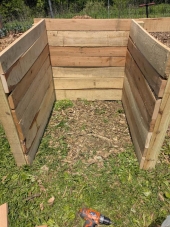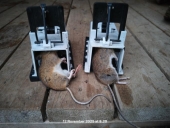Backstory:
Like many of us, I try to eat local and organic whenever I can. I am grateful to live in a place where I can usually find meat, dairy, eggs, vegetables, and fresh herbs that are local and organic. But whenever I got to the dried herbs/spices there was nothing local. It was all imported from at least across the country, if not from around the world. These containers smelled like nothing, had no color, and didn't add much flavor to anything.
One year, I had a huge crop of garlic and decided to make some home made garlic powder. We used some, and I gave the rest to family and friends. It was the best smelling and tasting garlic powder I had ever tasted. Everyone else thought so too. And while it was hard work, I had a blast making it. Then my life took a drastic turn, and I found myself in a situation where I had nowhere to grow things anymore. I still wanted to do something with local and organic food, but it took me a while to get from "I can't..." to "what can I...". When I did finally come around, I knew that dried herbs and spices was the perfect fit. My knowledge at the time was limited, so I started researching how to dry things. I learned a lot here at Permies.com and took it even a step further with a class from
Meeting House Farm (a medicinal herb growing collaborative). Not long after, The Maine Ingredient LLC was born.

It certainly helped that there is a certified organic farm just up the road that sells wholesale herbs to restaurants. I bought some and started drying them in
a small drying room I had created. I found I could create incredible dried herbs that actually had color, would make the whole room smell like that herb, and would still last a very long time. In this picture you can see the color difference between some thyme I dried and some store-bought.
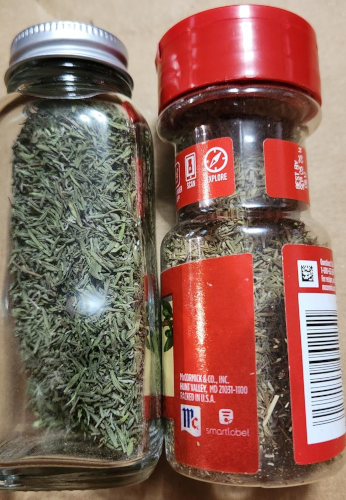 About:
About:
The Maine Ingredient LLC specializes in Maine grown, organic ingredients, with a focus on dried herbs and spices.
Local:
The Maine Ingredient is proud to be a local business. Our products are sourced from certified organic farms in Maine, then dried in Maine, and then packaged into USA made, glass bottles, right here in Maine.
Color and Flavor:
Most commercial options dry their product too hot and too fast. The Maine Ingredient uses the same techniques that are used in the medicinal herbalist industry. By using these time-tested techniques, I can produce products that actually have color and flavor, unlike most store bought dried herbs.
Less Plastic:
While some of our products come in contact with plastic during processing, none are ever stored in plastic once we have them.
Products:
We currently sell the following products...
Maple Sugar - Has a subtle flavor that is perfect for cinnamon rolls, muffins, bread, cookies, coffee, tea, and anywhere you would use refined sugar. Also has more nutrients and has a lighter impact on the land than refined sugar.
 Dried Sage
Dried Sage - Has an aromatic flavor that is great for breakfast sausage, pork, chicken, compound butter, stews, and more.
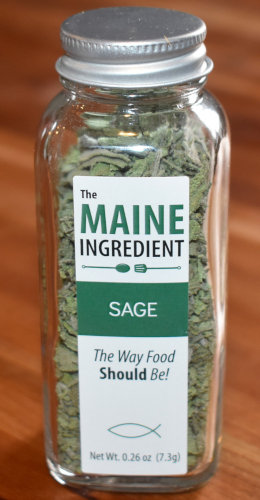
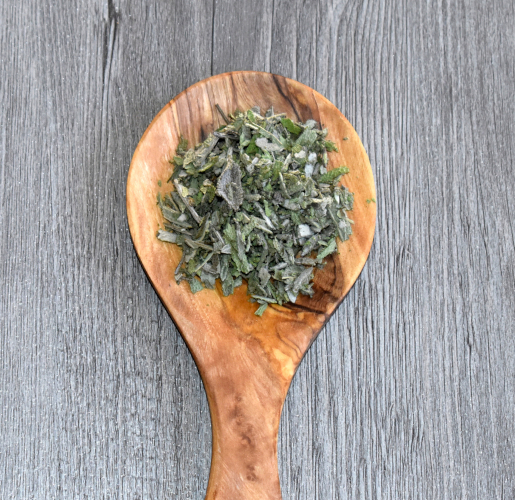 Dried Rosemary
Dried Rosemary - Has a pungent flavor that is perfect for beef, chicken, pork, lamb, stews, casseroles and more.
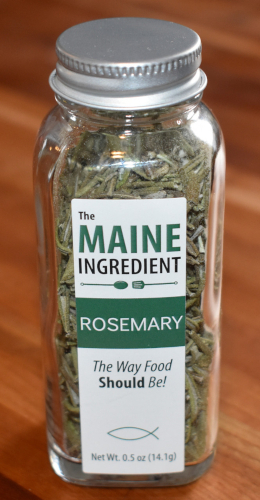
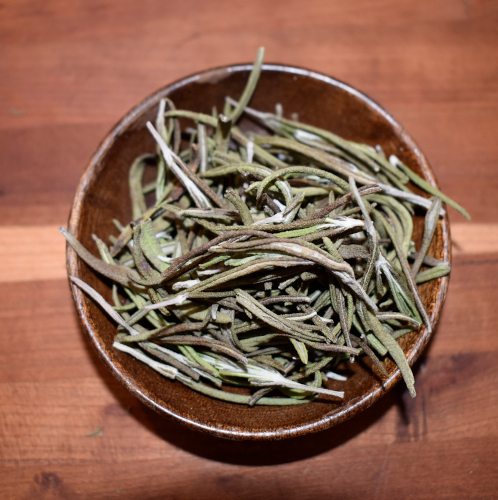 Dried Basil
Dried Basil - Has a hint of sweetness with that classic basil flavor and is great for soups, sauces, pasta, tea and more.
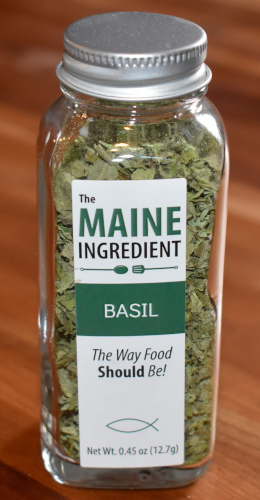
 Dried Thyme
Dried Thyme - Has a fragrant flavor and is great for beef, chicken, stocks, meatloaf, vegetables and more.
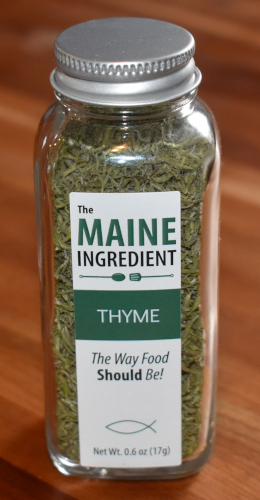
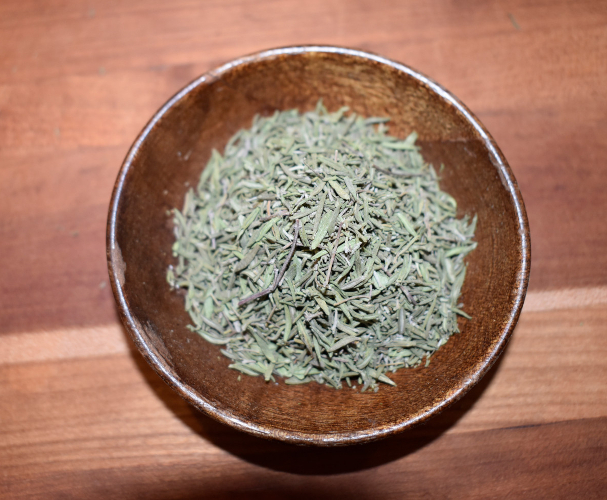 Dried Oregano
Dried Oregano - Has a pungent flavor, is most often used dried, and is fantastic for pizza, tomato sauces, Italian vinaigrettes, marinades, beef, salads, tea, and even more.
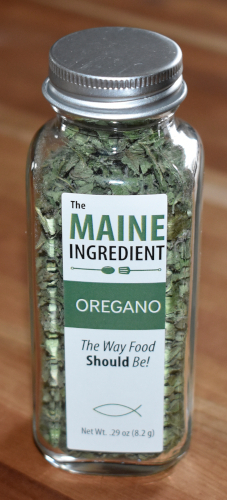
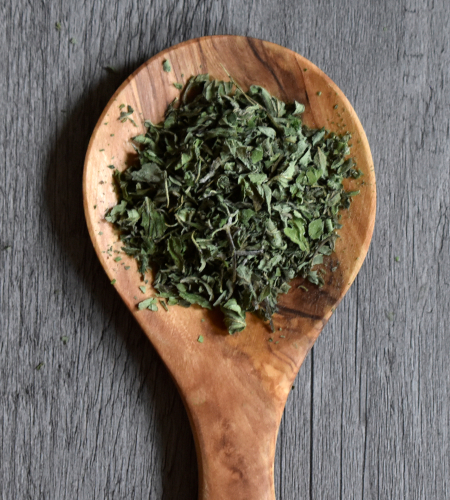 Dried Parsley
Dried Parsley - Has an herbaceous and slightly bitter taste, that helps accentuate other flavors and is fantastic for soups, meatloaf, dry rubs, baked potatoes, salads, and more.
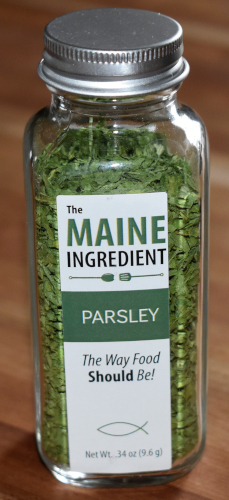
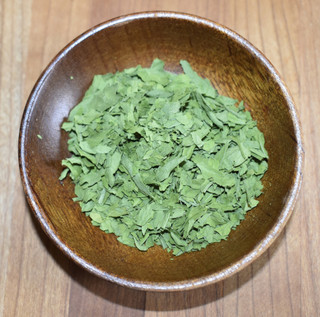 Dried Tarragon
Dried Tarragon - Has a mild licorice flavor that is signature in many french dishes and is great for potatoes, chicken, salmon, tuna, eggs, and more.
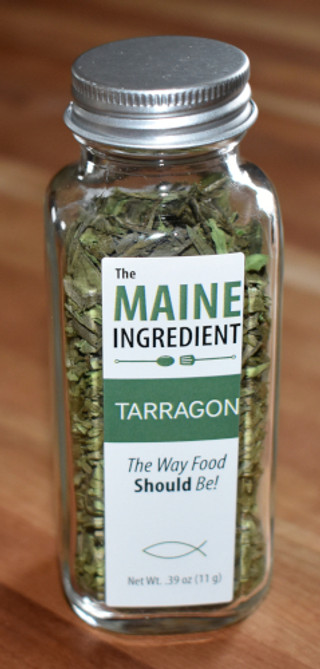

If you need help drying your own, feel free to reach out with questions. If you have someone closer to you, who is drying herbs/spices in a proper manner, then buy from them. If you are not able to dry your own right now and don't have someone else closer... check us out.
https://themaineingredient.com























